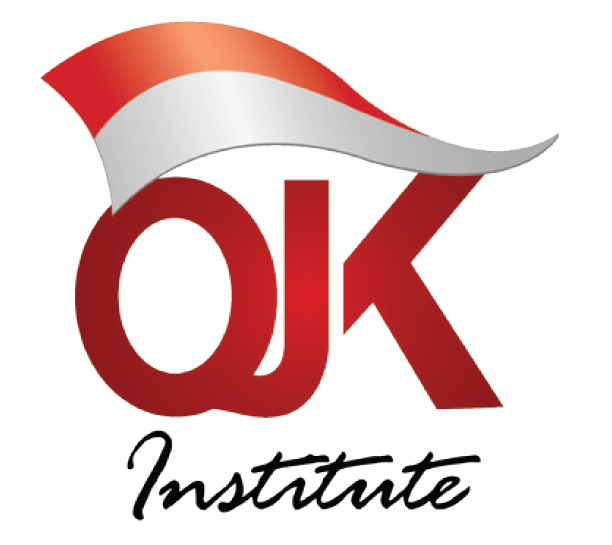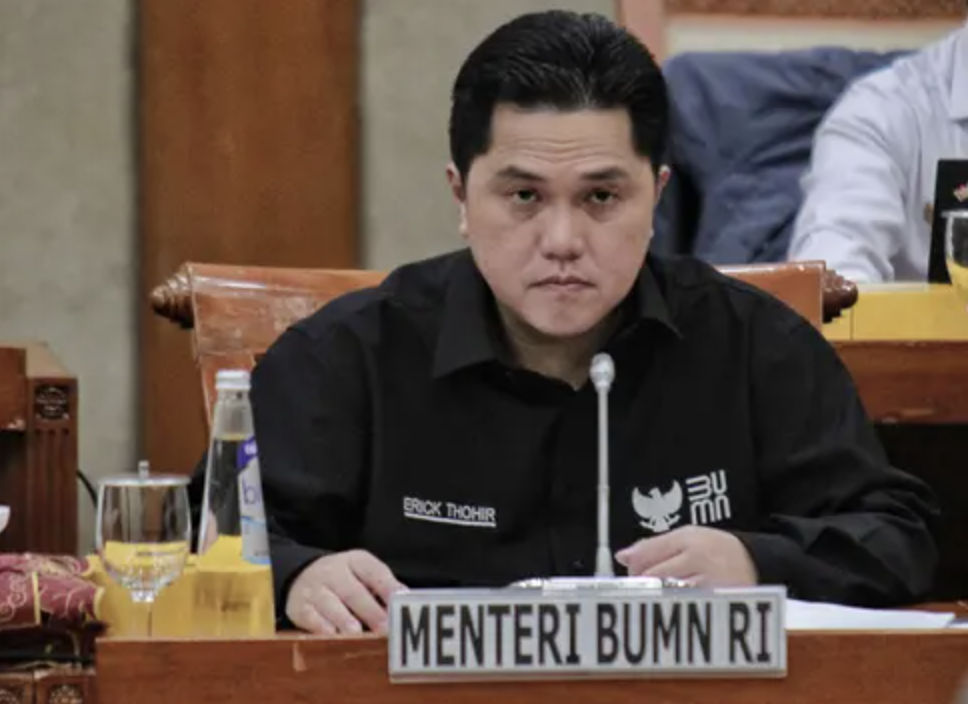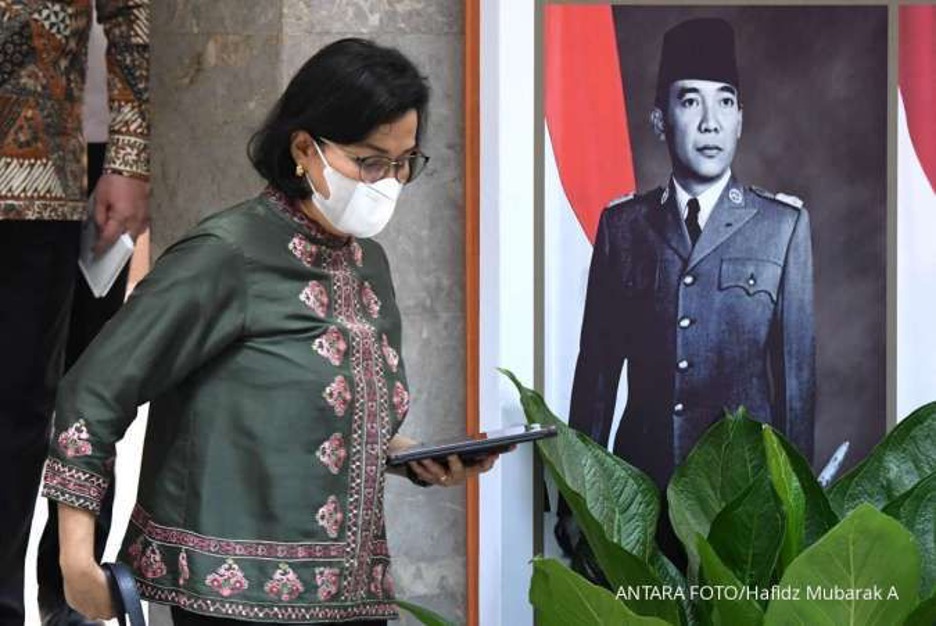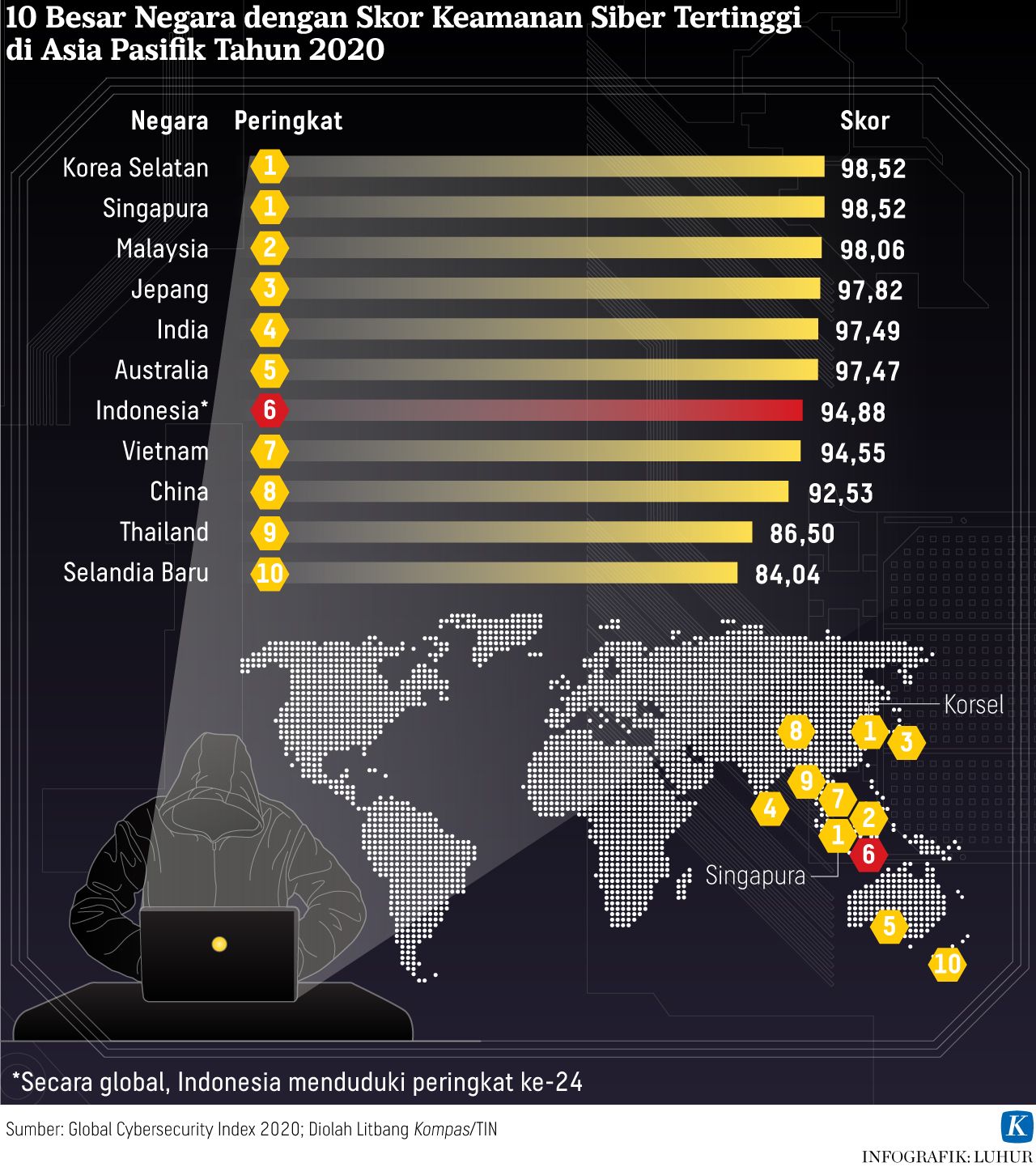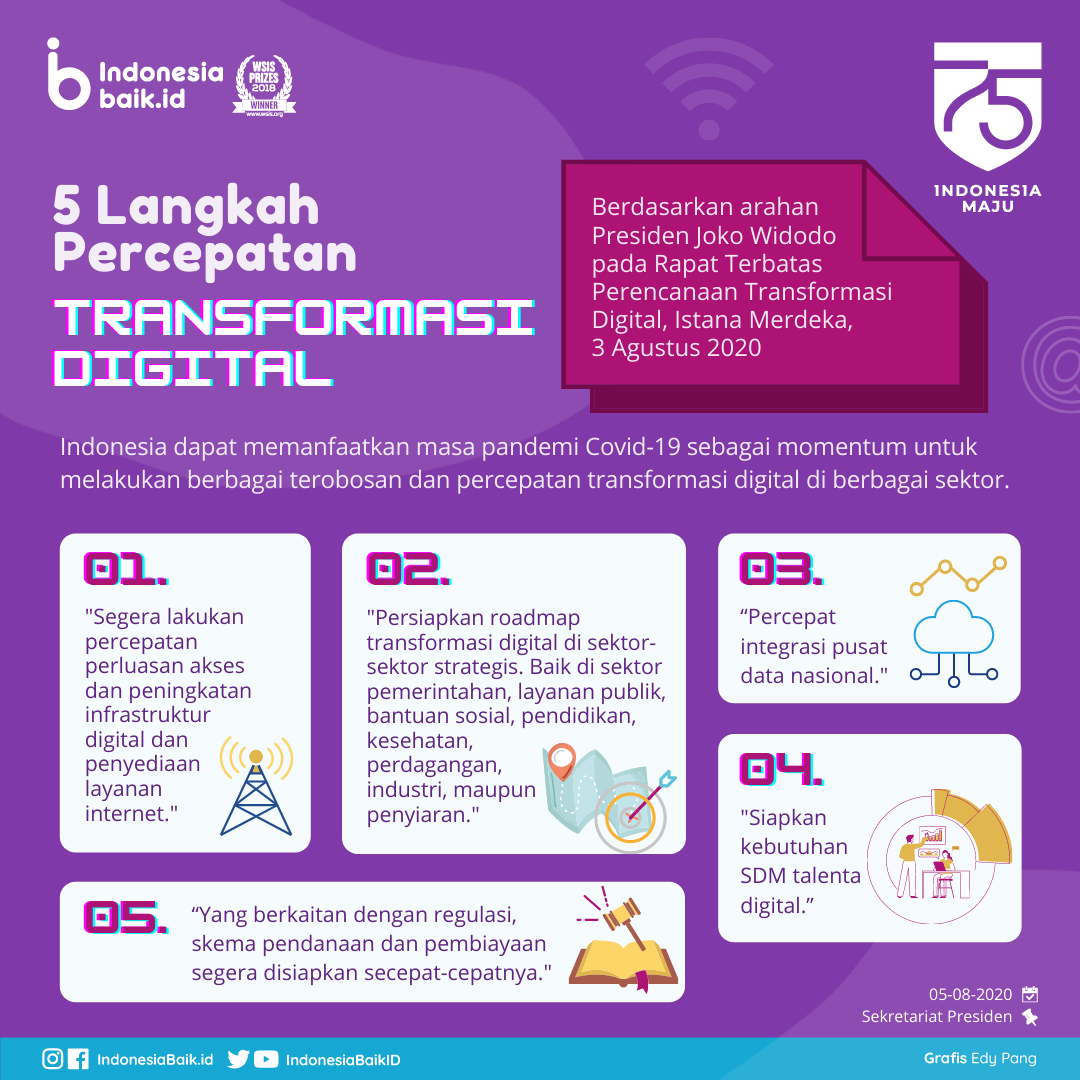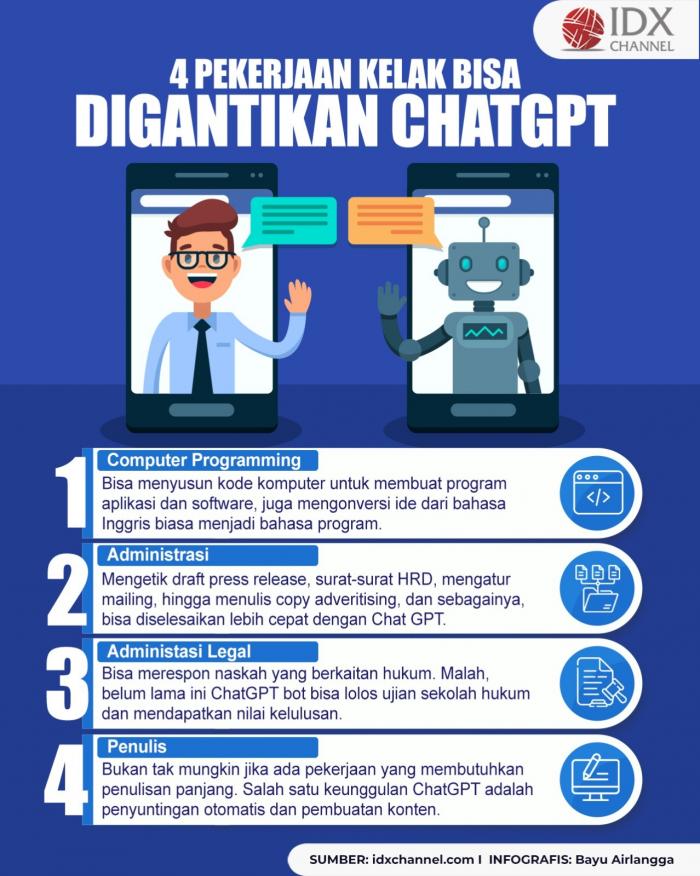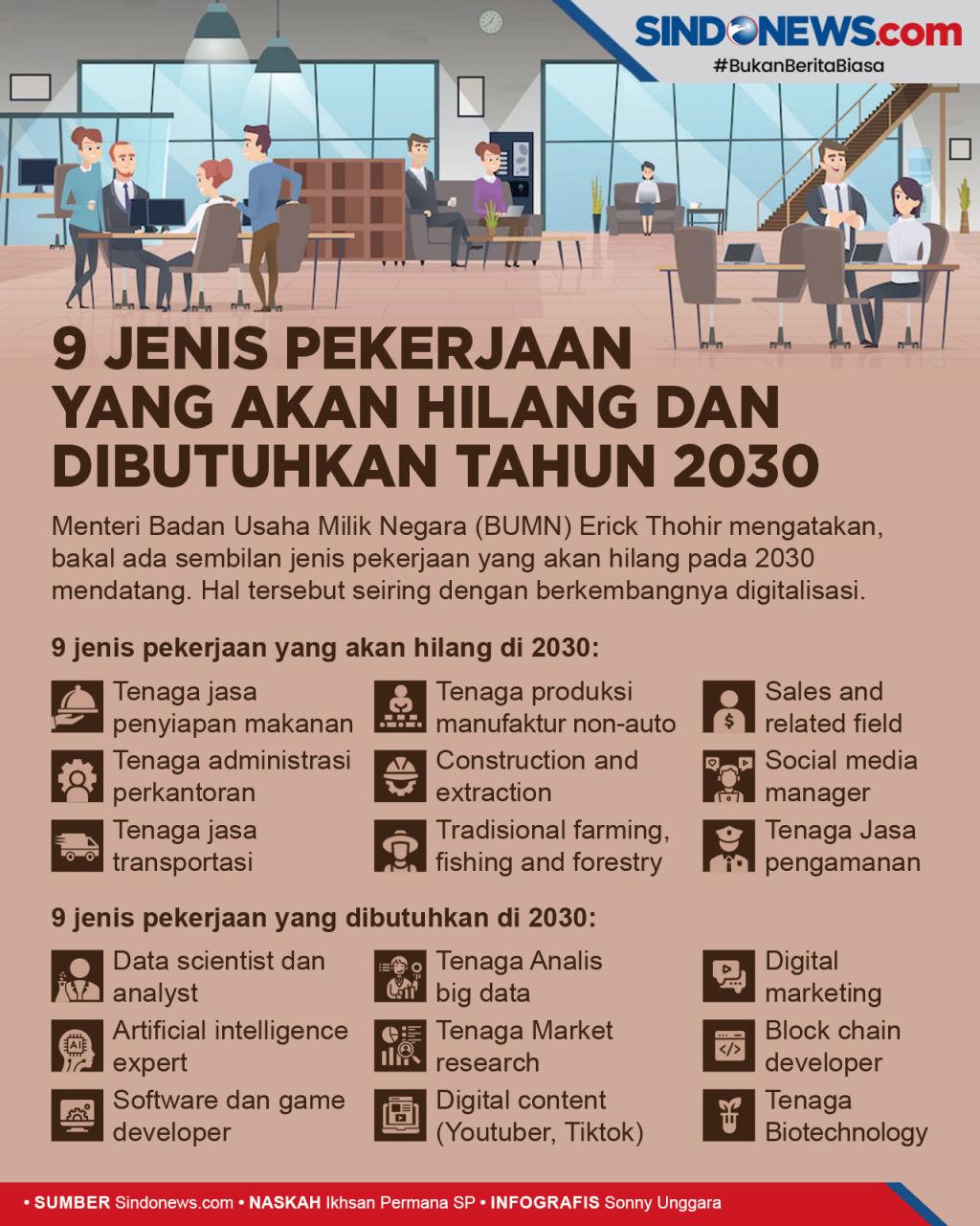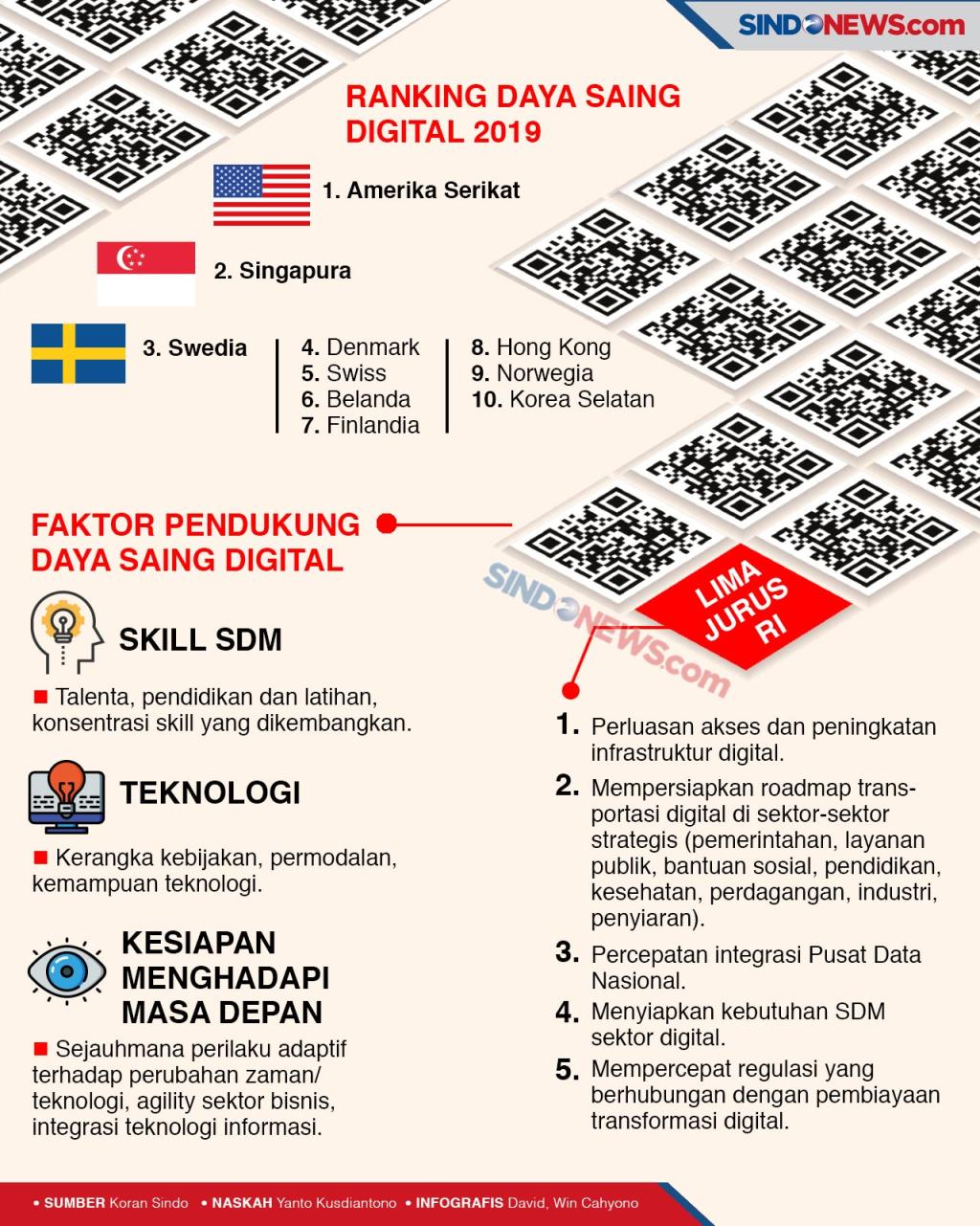Latest News
-
How climate change is beginning to be built into employee pay and benefits
Though still on the margins of the labor market, the concept of “green perks” is being added to…
-
Minister of Finance: Investment in Indonesian Human Resources is Increasingly Important and Urgent
Minister of Finance (Menkeu) Sri Mulyani Indrawati emphasized that investment in human resources in…
-
Erick Thohir asks experts to share HR development practices at the 2023 Human Capital Summit
BUMN Minister Erick Thohir asked human resource development (HR) experts to share their experiences.…
-
Opening of the OJK Kampus Merdeka Internship 1st Batch Program in 2024
News about the opening of the OJKS MBKM Program 2024
-
One of the 2023 Expenditure Budgets is focused on improving human resources
The Ministry of Finance has prepared a state budget of IDR 3,061.2 trillion next year.
Latest Infographics
-
Top Ten Countries with the Highest Cybersecurity Scores in Asia Pacific in 2020
Globally, Indonesia ranked number 24
-
5 Steps to Accelerate Digital Transformation
Was stated that digital transformation during a pandemic and in the next pandemic will structurally…
-
4 Jobs That Can Be Replaced In The Future ChatGPT: Does Your Profession Include?
Reportedly, the latest version of GPT Chat can be used to help create websites, music, coding, and…
-
Erick Thohir Reveals 9 Types of Jobs Will Disappear in 2030
Now is the era of economic growth based on capabilities rather than human resources (HR)
-
Support the Digital Sector to Become a Future Economic Driver
The ambition to make the digital sector a driving force for the economy in the future must be…
KADIN in Improving the Quality of Indonesian Human Resources
- 21 Mar 2023
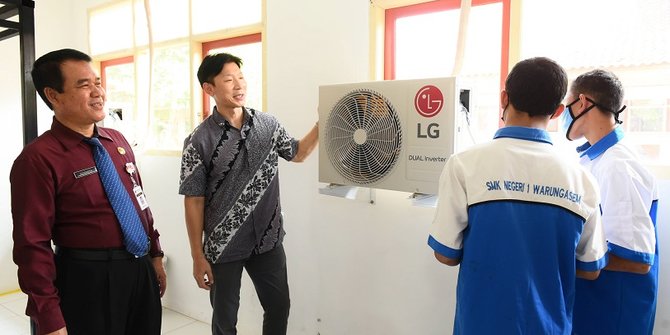
Merdeka.com - In the 90s, Amartya Sen introduced a development policy with a capability approach that placed the welfare of human resources (HR) as the main goal, so that the quality of human resources was one of the benchmarks for the success of development.
Over time, the massive development of technology, information and communication gave birth to a new era that requires a lot of adaptation from human resources. The contribution of human resources with high skills and abilities is needed to keep pace with developments in technology, information and communication (Azhar, 2020).
Development of the Condition of Indonesian Human Resources
Until now, the quality of human resources in Indonesia is still relatively low. BPS data shows that the workforce in Indonesia is still dominated by graduates from elementary school and below (never/never attended school/has not finished elementary school/graduated elementary school), namely 39.10 percent (February 2022).
The workforce with the last education was SMP by 18.23 percent, SMA 18.23 percent and SMK by 11.95 percent. Meanwhile, the workforce with diploma I/II/III and university education is only 12.60 percent (BPS, 2022). In fact, one of the important factors in improving the quality of human resources is education and training that can adapt to social changes in society.
On the other hand, data related to unemployment based on recent education is dominated by SMK 10.38 percent (February 2022). Unemployment who graduated from elementary school or below was 3.09 percent, junior high school was 5.61 percent, high school was 8.35 percent. Meanwhile, unemployment with the last education diploma is 6.09 percent and university is 6.17 percent (BPS, 2022).
The Indonesian government is currently being intensively producing superior quality human resources as the main capital in achieving national development goals and being able to compete in all fields in the global sphere. In addition, with superior quality human resources, people's standard of living and the wheels of the economy will also increase.
Innovation and creativity are the main keys to improving the quality of human resources in the era of globalization. The current economic and social dynamics prove that creativity and innovation provide choices, opportunities and a huge impact on improving human resources (Suciu, et al., 2018).
Human Resources and the Business World
Along with the current development of the industrial revolution, the business world is opening up job opportunities based on creativity and innovation. The development of the domestic industry currently requires quality, innovative and creative human resources as the spearhead of economic competitiveness. The main problem faced by Indonesia today is the mismatch between education and the business world.
Educational discrepancy illustrates that the educational background of the workforce does not match the needs of employers/industry (Effendi, et al., 2019). Many countries, including Indonesia, have been less successful in implementing education because stakeholders do not understand the concept, so that the curricula that are compiled are only aimed at academics that are not implementable for industry (Suharno, et al., 2020).
In order to prepare a workforce that is competitive, skilled, of good quality, and relevant to the demands of the ever-evolving world of work, collaboration between education and the work industry is urgently needed. Because of this, the government is actively encouraging the involvement of the business and industrial world (DUDI) to participate in supporting and developing human resources in the vocational revitalization project.
Therefore, the business world has high hopes for the government's vision to revitalize vocational education and training which is marked by the issuance of Presidential Decree Number 68 of 2022. This Presidential Decree regulates the preparation of a Labor Market Information System by the Ministry of Manpower.
It is hoped that this regulation will reduce the problem of educational discrepancies and improve the quality of national human resources effectively and efficiently. Of course, its implementation requires collaboration between the government, the community and the business world through KADIN.
The role of KADIN in Improving the quality of Human Resources
KADIN as the representative of the business world in the National Coordination Team will focus on providing input in preparing the National Strategy for Revitalization of Vocational Education and Training which is oriented to the needs of the business world (demand-driven). This is done by KADIN to identify problems and formulate solutions that are right on target in the world of national education.
In addition to revitalizing systems and policies at the national level, KADIN will also internally prepare itself to carry out the tasks mandated in Presidential Decree Number 68 of 2022. The Presidential Decree, among other things, entrusts KADIN to prepare the Indonesian National Work Competency Standards (SKKNI); support the availability of educators, instructors, facilities and infrastructure; also become an assessor (assessor) in the Competency Test in the Professional Certification Institute (LSP); as well as preparing the capacity of Provincial and District/City KADIN which will become part of the Vocational Revitalization Coordination Team at the regional level.
In the near future, KADIN will start a capacity building program for 4 provincial KADIN, namely West Java, Central Java, East Java and DIY. This program targets the Provincial KADIN to provide services that support companies to implement efficient & beneficial vocational education.
The program also plays a role as a socialization and campaign for companies about the benefits of vocational education and training so that companies are more interested in absorbing vocational graduates or even holding vocational education independently.
KADIN considers it important to change the image of vocational education as 'second class', and reshape the perspective of the community and the industrial world regarding the value proposition of vocational education with work-ready graduates. Of course, supported by the implementation of good practices and an ideal vocational system.
KADIN sees that there has been a lot of collaboration between vocational schools and industry, both independently and through programs implemented by the government. We appreciate the various partnership programs between the world of education and industry initiated by the Ministry of Education and Culture. Such as the Center for Excellence Vocational School and the Kedaireka Matching Fund.
We also appreciate the Ministry of Industry's efforts to support the establishment of several polytechnics needed by the industry. Meanwhile, from the industry side, partnerships with vocational schools are largely based on the need for a competent workforce and the awareness that vocational education has a positive impact on company productivity.
Nevertheless, KADIN views cooperation or partnerships between vocational schools and industry as one of the instruments for administering vocations that also need to be standardized. This standardization is very important to ensure that the partnership between vocational schools and industry leads to a continuous improvement of the ideal vocational system, not just a program for a certain period of time.
KADIN also highlighted a shift in the substance of the vocational partnership between schools and industry where it did not just focus on improving physical facilities and infrastructure but started touching on the system. For example, not a few schools implement a curriculum compiled by industry through the Independent Curriculum Scheme. This is a good signal of the openness of the world of education to the specifications of industrial needs. In this kind of program, we also appreciate companies that are dedicated to supporting the implementation of an industry-based curriculum, including by assisting with the communication and procedures needed with the relevant Education Office.
In addition to the curriculum, cooperation between vocational schools and industry also targets qualified teaching support, such as practitioners who teach in schools or coach students in the workplace. There are also industries that help increase the capacity of teachers or lecturers by providing training. However, KADIN assesses that it needs an ideal model of good practice that can be followed in order to catch up with Indonesia in terms of vocational education and training. For example, with a focus on developing qualification standards and certification of workplace trainers.
However, the availability of qualified curriculum and teachers can only be enjoyed by a handful of vocational schools that have strong networks with industry. Beyond that, there are still more vocational schools that have not been able to access qualified curriculum and instructors from the industry. The curriculum developed by vocational schools and colleges should be based on industry demands, both the type and the skills and work attitudes required.
Therefore, KADIN encourages the establishment of a national curriculum and teacher qualification system that is based on industry needs, so that it can be applied equally in all vocational schools in Indonesia.
(ii) more sustainable incentives are needed to ensure the participation of the business world in this vocational system revitalization program.
News cited from
Tags :
- KADIN
- SDM
- ERA BARU SDM
- ERA BARU
- NEW ERA
- HR
- HR SJK
- KADIN
- SDM
- ERA BARU SDM
- ERA BARU
- NEW ERA
- HR
- HR SJK
